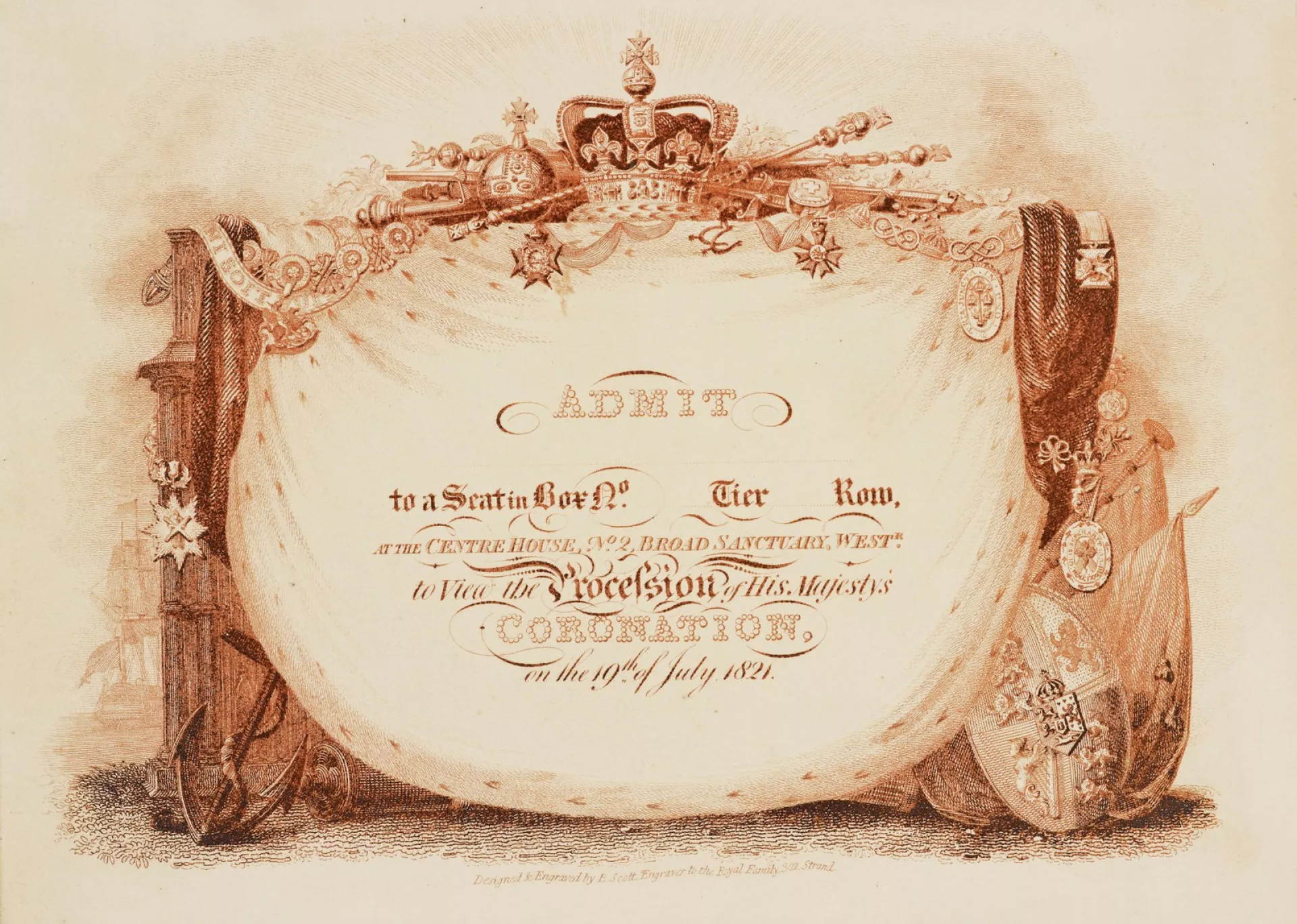RA F&V/COR/1821
1821Admission ticket to view the procession to Westminster Abbey for the Coronation of George IV and a ticket for the Royal Family’s box inside the Abbey, 19 July 1821
On Coronation Day the monarch formerly walked in procession from Westminster Hall to Westminster Abbey and then back again, after the service, for the Coronation Banquet: the route went between the north door of Westminster Hall, through New Palace Yard, Parliament Street, Bridge Street, King Street and the Abbey’s west door. This acted as part of the ‘recognition’ of the monarch by his or her subjects.
As it was the only part of the whole event that was open to almost anyone, the procession proved extremely popular and people would view it from the roofs and windows of houses and from specially built tiers of seats, as well as from the pavements. These tiered scaffolds, which were inspected for strength and safety, could hold between 1,200 and 1,500 seats and could bring in a great deal of money for those who owned properties along the procession’s route: in 1761, at the Coronation of George III, one small house made £700, while a larger one made £1,000.
The rather ornate ticket for Centre House, Broad Sanctuary, is presumably for one such scaffold which, as well as having tiers and rows, also appears to have had separate boxes. It would probably have been a prime location: Centre House no longer exists, but Broad Sanctuary lies alongside Westminster Abbey. William IV did away with the procession on foot for his coronation in 1831, travelling to the Abbey in the Gold State Coach and thus establishing the practice which has continued ever since.
Inside Westminster Abbey, scaffolding was also built to provide seats for an increasing number of coronation guests. Tickets were distributed either via the Earl Marshal’s office or sold to the public by the Abbey’s Dean and Chapter; in 1821 the number of seats provided through the former alone was an astonishing 4,656 (compared with 1,339 for the 1761 coronation).
This ticket for the Royal Family’s box has been signed by Lord Howard of Effingham, who was Deputy Earl Marshal for this coronation. It was designed by Sir William Congreve (1772–1828), one of the King’s equerries and, more famously, an inventor of rockets, and bears a number of national symbols: a crown and portcullis in the corners and a repeated border design of roses, thistles and shamrocks. The central medallion depicts the crowning of the King.
These items come from a collection of ephemeral material relating to royal events and visits which all contribute to information in the main collections about royal ceremonies and activities.








